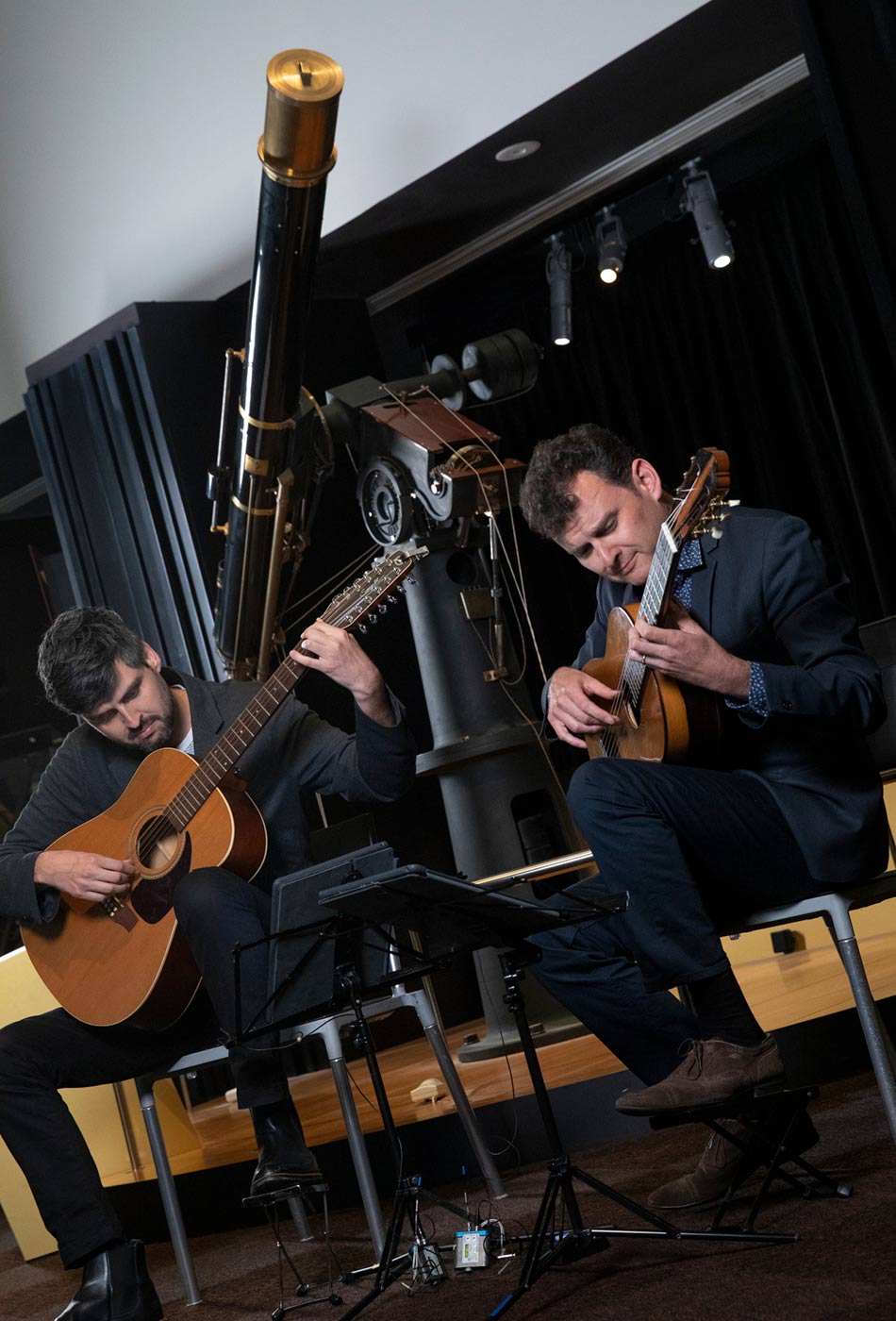The Grigoryan Brothers spent many hours discussing the Grubb telescope and the stories behind it. Their composition attempts to capture the life of astronomer William John Macdonnell and his passion for the southern skies.
Grigoryan Brothers – This is Us series 02 Mar 2021
Southern Sky

The work imagines the stars and the planets and how Macdonnell might have felt as he explored and mapped the night sky. The melody is almost mournful, acknowledging that Macdonnell worked alone but was surrounded by the source of his passion.
It’s an atmospheric piece, drawing out the sounds of openness and space while invoking a sense of wonder at the vastness of the universe.
WJ Macdonnell
Amateur astronomer William John Macdonnell purchased this telescope from Thomas Grubb’s Astronomical Instrument Works, Dublin, in about 1885. He installed it in an observatory he had built behind the Port Macquarie Bank of New South Wales, where he worked as manager, and turned it to the heavens.
Macdonnell used the telescope in a range of observing programs, mapping double stars and sunspots and investigating the planets and the satellites of Jupiter. He published his findings in British and Australian scientific journals and became an eminent Australian astronomer, but was forced to sell the instrument during the financial crisis of the 1890s.
The telescope was eventually acquired by Sydney architect EH Beattie, who used it extensively from 1906 and published many scientific papers based on his observations. In 1921 it was dismantled and placed in storage, where it remained for most of the next 85 years. The Museum has returned it to working condition, as it would have appeared in the late 19th century.
This video has no sound.
In our collection
You may also like